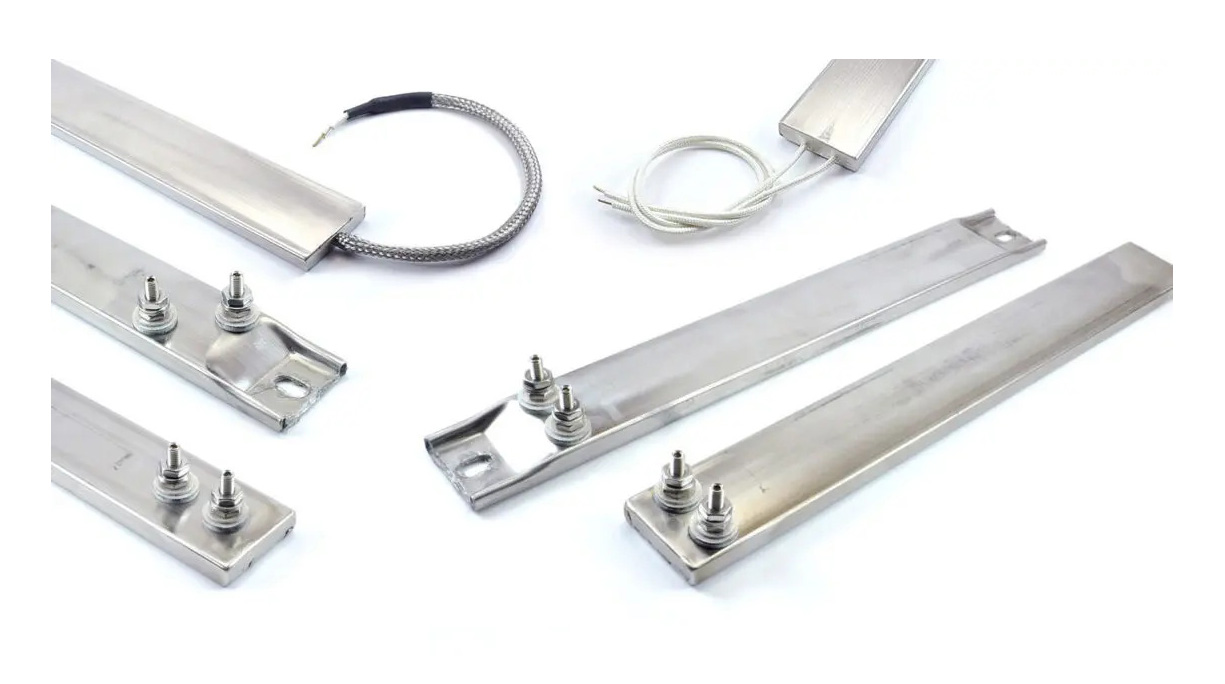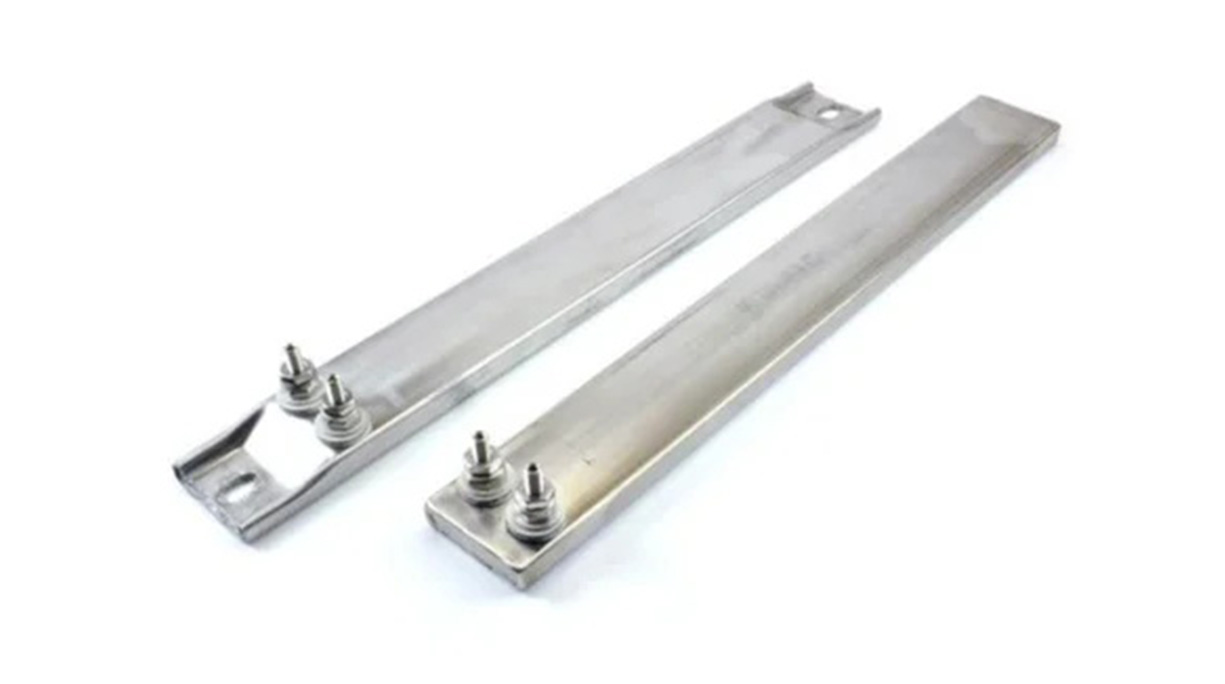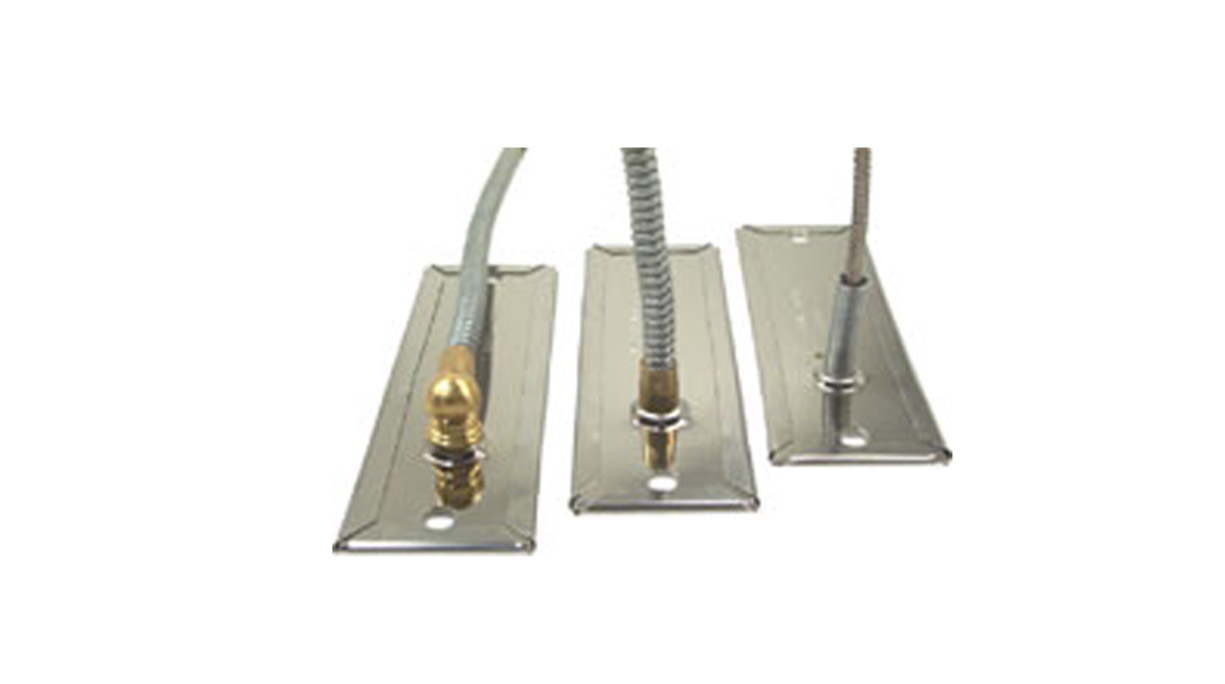Are you struggling to find the right heating solution for your industrial needs? Mica strip heaters might just be what you are looking for. They offer efficient and reliable heat for various applications.
Mica strip heaters are heating elements used to transfer heat through conduction. They are made of a resistance wire wound on a mica sheet. This design allows for uniform heat distribution and efficient thermal transfer. They are commonly used in plastics, packaging, and food processing industries.
So, if you want to know more about mica strip heaters, keep reading. I will share my knowledge and experience to help you understand their construction, applications, and key specifications.
Mica vs. Ceramic Strip Heaters: Which Is Best for Your Industrial Process?
Are you torn between mica and ceramic strip heaters? It is important to know their differences to make the right choice. Both have their strengths, but one might be better suited for your specific needs.
Mica strip heaters are great for applications requiring flexibility and even heat distribution. Ceramic heaters can withstand higher temperatures and are more durable. The choice depends on your operating temperature and the environment.
To help you decide, let’s compare them in detail:
What are the key differences in their construction?
Mica and ceramic strip heaters are different in materials and design. This affects their performance in different environments.
| Feature | Mica Strip Heaters | Ceramic Strip Heaters |
|---|---|---|
| Material | Resistance wire wound on mica insulation | Resistance wire threaded through interlocking ceramic bricks |
| Max Temperature | Up to 900°F (482°C) | Up to 1200°F (649°C) |
| Heat Transfer | Excellent, uniform heat distribution | Good, withstands higher temperatures |
| Applications | Plastic processing, packaging, food warming | High-temperature ovens, industrial heating |
| Thermal shock resistance | Lower Resistance | High Resistance |
As you can see, mica heaters are better for even heat distribution at lower temperatures. Ceramic heaters excel in high-temperature environments. We once had a client who chose mica heaters for their plastic extrusion process. They needed consistent heat to prevent uneven melting. The mica heaters worked perfectly, providing the uniform heat they needed.
Which one offers better thermal conductivity?
Thermal conductivity is important for efficient heat transfer. The better the conductivity, the less energy is needed to reach the target temperature.
| Feature | Mica Strip Heaters | Ceramic Strip Heaters |
|---|---|---|
| Thermal Conductivity | High, due to thin mica layers | Moderate, due to the nature of ceramic material |
| Heating Efficiency | Fast and even heating | Slower, but maintains heat well |
| Energy Consumption | Lower for consistent temperature applications | Higher for reaching and maintaining high temperatures |
| Temperature Uniformity | Excellent, minimal temperature variation | Good, but may have hot spots |
Mica heaters heat up quickly and evenly. This makes them energy-efficient for applications needing consistent temperatures. Ceramic heaters, on the other hand, take longer to heat up but maintain heat well. This is better for high-temperature applications where temperature stability is key. For example, a client in the food processing industry switched to mica heaters for their warming stations. They reported lower energy bills and more consistent food temperatures.
Top 5 Applications of Mica Strip Heaters in Industrial Manufacturing
Where are mica strip heaters most useful? Knowing their applications can help you see if they fit your needs. They are used in many industries for their efficiency and reliability.
Mica strip heaters are commonly used in plastic extrusion, food processing, packaging, and laboratory equipment. Their ability to provide uniform heat makes them ideal for these applications.
Let’s explore the top 5 applications in detail:
How are they used in plastic extrusion?
Plastic extrusion requires precise temperature control. Mica strip heaters are perfect for this because they offer consistent and even heat.
| Application Detail | Mica Strip Heaters Benefit | Explanation |
|---|---|---|
| Barrel Heating | Uniform temperature maintenance | Ensures consistent plastic melting and flow, preventing defects in the final product. |
| Die Heating | Precise temperature control | Maintains the correct temperature at the die, ensuring accurate shaping and dimensions of the extruded plastic. |
| Energy Efficiency | Reduced energy consumption due to efficient heat transfer | Minimizes energy waste, lowering operational costs and improving overall efficiency of the extrusion process. |
| Temperature Stability | Prevents temperature fluctuations | Maintains consistent plastic viscosity, resulting in higher quality extrusions with fewer imperfections. |
In plastic extrusion, the barrel and die must be kept at a constant temperature. Mica heaters ensure the plastic melts evenly and flows correctly. This results in higher quality products and less waste. We had a customer who improved their extrusion process by switching to our mica heaters. They saw a significant reduction in product defects.
How are they used in the food processing industry?
In the food processing industry, maintaining consistent temperatures is important for food safety and quality. Mica strip heaters are used in various applications to ensure food is heated evenly.
| Application Detail | Mica Strip Heaters Benefit | Explanation |
|---|---|---|
| Food Warmers | Consistent temperature maintenance | Keeps food at safe and appealing temperatures, preventing bacterial growth and maintaining flavor. |
| Ovens | Uniform heat distribution | Ensures even cooking and baking, preventing hot spots and undercooked areas. |
| Packaging | Precise temperature control for sealing | Creates strong and reliable seals on food packaging, preventing spoilage and contamination. |
| Reduced Scrap | Preventing food waste due to poor temperature control | Helps maintain consistent quality and safety, reducing the amount of food that needs to be discarded due to improper heating or cooling. |
For example, they are used in food warmers to keep food at the right temperature. They also help in sealing food packages, ensuring they are airtight and safe. A local bakery uses our mica heaters in their ovens. They say it helps them bake consistently perfect products every time.
How to Extend the Lifespan of Your Mica Strip Heater: Maintenance Guide
Do you want to get the most out of your mica strip heaters? Proper maintenance is key to extending their lifespan. Simple steps can prevent common issues and ensure they run efficiently for years.
To extend the lifespan of mica strip heaters, ensure proper installation, regular cleaning, and avoid overheating. Check connections, keep them clean, and monitor temperature regularly.
Here’s how to do it:
How do you correctly install mica strip heaters?
Proper installation is the first step in ensuring a long lifespan. Incorrect installation can lead to premature failure and reduced efficiency.
| Installation Step | Importance | Explanation |
|---|---|---|
| Ensure Proper Fit | Prevents air gaps and hot spots | Make sure the heater fits snugly against the surface it is heating. Air gaps can cause uneven heating and lead to overheating in certain areas. |
| Use Correct Fasteners | Secure and even contact | Use the correct screws and mounting hardware. Tighten them evenly to ensure the heater maintains full contact with the surface. Over-tightening can damage the heater, while under-tightening can cause air gaps. |
| Check Electrical Connections | Prevents loose connections and potential hazards | Ensure all electrical connections are secure and properly insulated. Loose connections can cause arcing, which can damage the heater and pose a fire risk. |
I remember when we visited a client who was having problems with their mica heaters failing quickly. We found out they were not installing them correctly, leaving air gaps. After we showed them the right way, their heaters lasted much longer.
What is the correct way to clean mica strip heaters?
Regular cleaning is important for removing contaminants that can affect performance. Dust, oil, and other debris can insulate the heater, causing it to overheat.
| Cleaning Step | Importance | Explanation |
|---|---|---|
| Power Off and Cool Down | Safety First | Always disconnect the power and allow the heater to cool down completely before cleaning. This prevents electrical shock and burns. |
| Use Soft Brush or Cloth | Prevents Damage | Use a soft brush or cloth to gently remove dust and debris. Avoid using abrasive materials or harsh chemicals, as these can damage the heater’s surface and insulation. |
| Inspect for Damage | Early Detection | While cleaning, inspect the heater for any signs of damage, such as cracks, frayed wires, or corrosion. Addressing these issues early can prevent further damage and extend the heater’s lifespan. |
We always tell our clients to clean their heaters regularly. A simple wipe-down can make a big difference. One of our clients in the packaging industry had frequent heater failures until they started a regular cleaning schedule.
Buyer’s Guide: Key Factors When Selecting Mica Strip Heaters (Cost, Materials, Wattage)
Choosing the right mica strip heater involves considering several factors. Cost, materials, and wattage all play a role in the heater’s performance and suitability for your application.
When selecting a mica strip heater, consider the operating temperature, wattage, dimensions, and environmental conditions. Selecting the right heater ensures optimal performance and longevity.
Here are the key factors to consider:
What materials are used in mica strip heaters?
The materials used in mica strip heaters affect their performance and durability. The quality of the mica, resistance wire, and outer sheath all matter.
| Material | Importance | Explanation |
|---|---|---|
| Mica | Insulation and heat transfer | High-quality mica provides excellent electrical insulation and efficient heat transfer. Look for heaters that use high-grade mica to ensure optimal performance and longevity. |
| Resistance Wire | Heat generation | The resistance wire is responsible for generating heat. Common materials include nickel-chromium alloys, which offer good resistance to oxidation and high-temperature stability. |
| Sheath | Protection and durability | The outer sheath protects the heater from physical damage and environmental factors. Stainless steel is a common choice for its durability and resistance to corrosion. |
We always use the best materials in our mica heaters. For example, we use high-grade mica from reliable sources. This ensures our heaters perform well and last long. A client once told us that our heaters outlasted others they had used because of the quality of materials.
How does wattage affect the performance?
Wattage determines how much heat the heater can generate. Choosing the right wattage is important for meeting your application’s heating requirements.
| Wattage Factor | Importance | Explanation |
|---|---|---|
| Heating Requirements | Meeting temperature needs | Calculate the amount of heat needed for your application. Consider factors like the size of the object being heated, the material, and the desired temperature. |
| Heater Size | Matching heater size to wattage | Ensure the heater is appropriately sized for the wattage. A heater that is too small for the required wattage can overheat and fail prematurely. |
| Temperature Control | Maintaining consistent temperature | Choose a wattage that allows for precise temperature control. Too much wattage can lead to overheating, while too little may not reach the desired temperature. |
Selecting the correct wattage is key. Too much or too little can cause problems. We help our clients calculate the right wattage for their needs. One of our clients in the lab equipment industry needed very precise temperature control for their experiments. We helped them select the perfect wattage for their heaters, and they were very happy with the results.
Conclusion
Mica strip heaters offer a versatile and efficient heating solution for various industrial applications. Understanding their construction, applications, maintenance, and selection factors can help you make the best choice for your needs.








